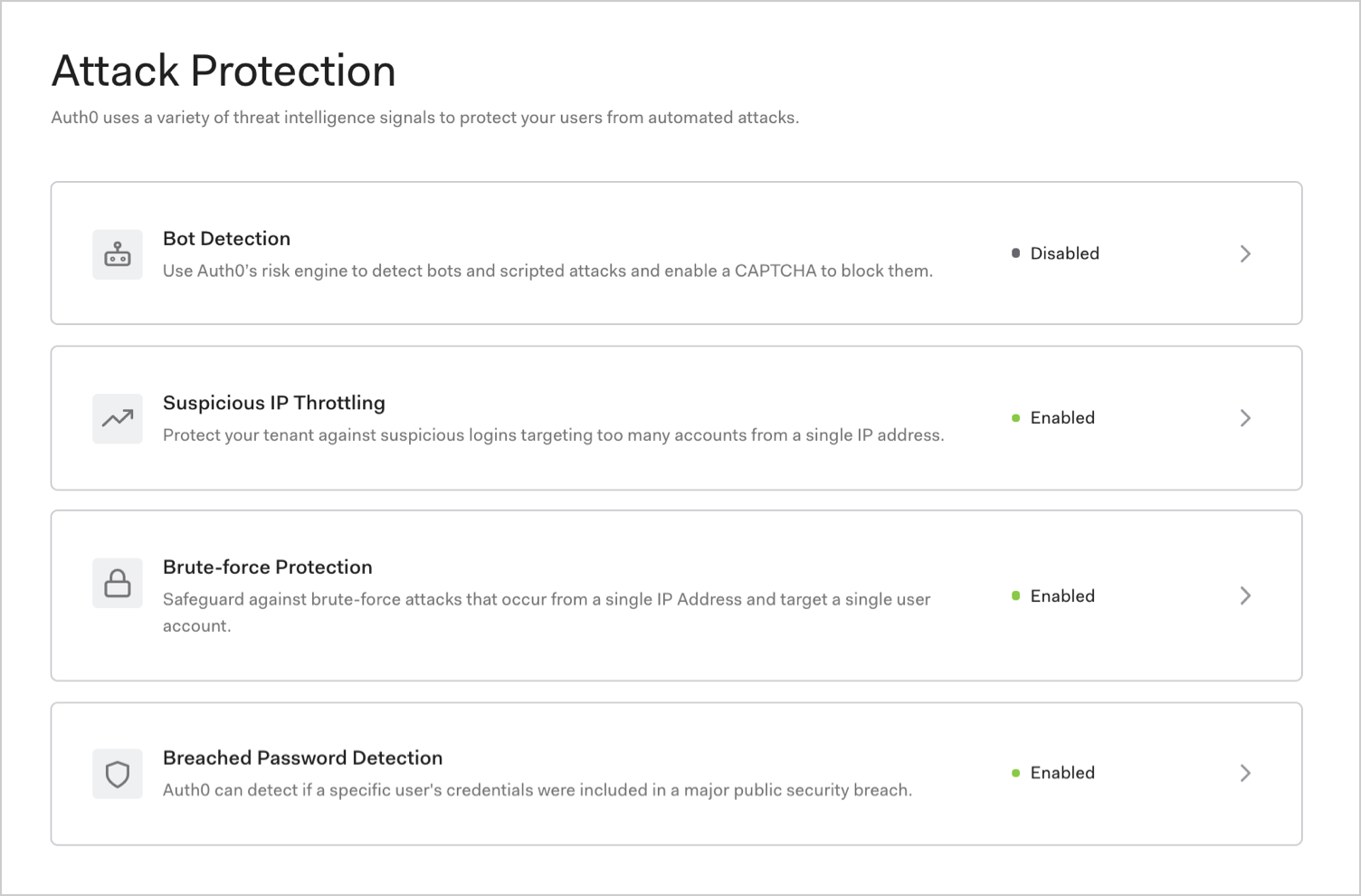Attack Protection
Auth0 can detect attacks and stop malicious attempts to access your application such as blocking traffic from certain IPs and displaying CAPTCHA.
In the Auth0 Dashboard, you can enable the following attack protection options to mitigate attacks:

How it works
When it comes to combatting abuse, there is no silver bullet. Auth0 supports the principle of layered protection in security that uses a variety of signals to detect and mitigate attacks.
| Feature | Risk signal | How it works |
|---|---|---|
| Bot Detection | IP reputation computed by analyzing the quality of traffic seen for each IP. | Triggers a CAPTCHA step when a login attempt comes from an IP suspected of use by a bot. |
| Suspicious IP Throttling | Velocity of login attempts from an IP for any number of accounts against a tenant. | Detects when a bot/script tries too many identifier/password combinations within a short period of time. |
| Brute-force Protection | Velocity of login attempts from an IP for a particular account. | Detects when a bad actor tries to login to an account too many times within a period of time. |
| Breached Password Detection | Use of a breached password that appears in lists of breached passwords on the dark web. | Stops users from using passwords that are known to be breached in some 3P sites. |
Notification
In the event of an attack, users will be notified by email once per hour regardless of the number of logins. For example, if a user tries to log in 200 times in 1 hour and 30 minutes, we will send 2 emails. Password reset links are valid for 5 days. You can customize the emails sent to your users.
In the event of an ongoing attack, traffic can be blocked from thousands of IP addresses at a time. Auth0 will send a single email to each administrator every hour that traffic is blocked, regardless of the number of IPs involved in the attack.
Monitoring
Enabling attack protection features without configuring response settings activates Monitoring mode, which records related events in your tenant log only. The tenant log will contain information about whether the login was determined to be risky so you can determine if you want to configure responses.
Reporting
You can also create reports using tenant log data to see attack protection events.